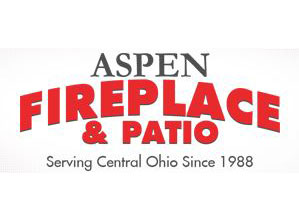The issue of a natural gas ban is certainly a hot topic issue in the USA and Canada that could affect millions of people. The entire premise behind this controversy stems from attempts to reduce carbon emissions into the atmosphere and to improve public health.
Some feel very passionate that there are compelling reasons to eliminate natural gas (NG) as a heating and cooking fuel, while others have strong feelings about the importance of continuing the use of NG in our daily lives. In this article, we will provide information on both sides of the issue and let you come to your own conclusion.
UNDERSTANDING THE CONCERNS
Natural gas is a fossil fuel. When burned in furnaces or boilers, the emissions from NG include nitrogen oxides, carbon monoxide, carbon dioxide, methane, nitrous oxide, volatile organic compounds (VOCs), and trace amounts of sulfur dioxide and particulate matter. Of all these by-products from combustion, methane gas has the most potential for contributing to the greenhouse effect.
Some research has also indicated that gas cooking stoves may leak very small traces of methane gas, nitrogen dioxide, formaldehyde, and carbon monoxide.
Because of these concerns, cities such as Berkeley, California became the first to ban natural gas-powered space and water heating for new construction. But that ban was declared illegal by the Court of Appeals in San Francisco in April 2023. Such a ban is preempted by a federal law.
New York has banned NG furnaces and stoves in new construction. Washington and other states, as well as several major cities, are poised to follow suit. In Canada, Montreal, Vancouver, and some other smaller municipalities have considered banning this source of energy.
POINT – COUNTERPOINT
Those in favor of the natural gas ban say that:
- Unburned methane gas directly contributes to the greenhouse gas effect.
- Cooking on gas stoves could emit hazardous pollutants.
- Public safety, health concerns and indoor air quality issues should be priority #1.
- Extracting NG by fracking causes environmental damage.
- Natural gas is a flammable and combustible fuel.
It’s a fact that NG’s carbon emissions are much lower than those of other fossil fuels. Natural gas is known to burn the cleanest of all fossil fuels. Many consider NG a “bridging fuel”, because it fills the gap between eliminating larger fossil fuel plants and developing and growing renewable energy on a larger scale. It is also a fact that Renewable Natural Gas has entered the pipelines in multiple regions and its production is increasing every year.
Critics of the move to phase out natural gas appliances argue that:
- Homeowners should have the freedom to choose what source of energy they want to use.
- If electricity is the only choice, energy and manufacturing costs will skyrocket.
- Annual inflation would dramatically increase with only one energy option.
- NG is abundant and safe to store and transport.
- There isn’t enough electricity generated to support future demand and population growth.
- Natural gas is a green option versus power plants using coal and nuclear energy.
- Costs to convert from NG to other fuel options will be out of reach for many.
In addition to this, the natural gas industry invests billions of dollars into infrastructure upgrades and energy efficiency every year! This effort has reduced emissions from the natural gas distribution system by 69% since 1990. The natural gas industry continues to make a huge commitment regarding climate change.
THE DIFFERENT FORMS OF NATURAL GAS
Global demand for gas as an energy source is increasing, and it’s important to note that there are other forms of natural gas. Natural gas can be used in the form of liquefied natural gas (LNG), liquefied petroleum gas (LPG) and compressed natural gas (CNG). It’s a vital international commodity that’s increasing the quality of life for millions around the globe. Exporting NG is at an all-time high.
LNG is natural gas that has been cooled to a liquid state, about -260° Fahrenheit, for shipping and storage. The volume of natural gas in its liquid state is about 600 times smaller than its volume in its gaseous state. LNG can be stored in tanks, shipped or transported in pipelines.
A relative of natural gas, LPG is produced in natural gas processing plants and in petroleum refineries by heating and distilling crude oil. Liquidity is the distinctive characteristic that makes LPG so widely used and popular. At normal temperatures and pressures, LPG is gaseous. But, when put under modest pressure or cooling, it changes to a liquid state.
LPG is used on all six continents and by more than 3 billion, yes billion, people around the world! LPG is mainly used for heating, commercial applications, cooking, recreation, cooling and transportation.

Renewable compressed natural gas (RNG) is a transportation fuel made from organic waste, including animal waste, crop residue and food waste. Note that RNG is not a fossil fuel. It’s a zero emissions solution that has been certified by the EPA! Since it’s estimated that 28% of the total greenhouse gas emissions in the U.S. are from the transportation industry, RNG is, and will continue to be, an important commodity.
OTHER POINTS TO PONDER…
- Nearly 187 million Americans and 27 million Canadians use natural gas every day because it is affordable, reliable, safe and essential to improving our environment. These customers rely on natural gas to heat their homes, warm their water and cook their food. Those numbers are on the rise every year, making natural gas an indispensable part of our lifestyle.
- Emissions from natural gas distribution systems have dropped 69% since 1990. Natural gas utilities are committed to reducing greenhouse gases even more. Not only are utilities cutting emissions from their operations, but they are also working hand in hand with their customers, helping shrink their carbon footprints and reduce their impact on the environment.
- Any form of natural gas helps fuel our economy in many ways. It provides good-paying jobs to hard-working men and women. In the USA and Canada, more than 4.1 million jobs are connected to the gas industry in one way or another.
- Natural gas powers industrial, manufacturing and food processing. It helps heat and dry materials, generates electricity, heats millions of homes and serves as a key component to many essential products and services that we enjoy daily.
- Natural or LP gas can be a life saver by supplying the fuel for emergency generators, cooking and water heating in the event of an electrical outage. Give some thought to these real-life emergencies:
-
- In February of 2021, over 5 million people in Texas were without power because of severe winter storms. The loss of lives from the storm was reported to be 246 people in 77 counties.
- In April of 2023 over 1.1 million people in Montreal had no electricity following a severe ice storm. Those with gas fireplaces and free-standing gas stoves were able to cope much better with the emergency by providing heat to their homes. Most were able to stay home and suffered no serious damage from the frigid temperatures.
- During a heat wave in the summer of 2023, Exel Energy in Denver locked the thermostats of thousands of homes at 78˚F, because the demand exceeded the supply. In California, rolling blackouts have been happening in some of its regions, because there isn’t enough electricity produced for the peak demands.
- Rolling blackouts are normal and quite common in developing countries. Could the frequency increase here? Imagine what could happen if utilities could not rely on natural gas generating stations during times of peak electric demands.
In light of this information, it seems the advantages of natural gas remain very strong in a balanced approach to energy. Natural gas helps to keep energy costs manageable for homeowners. It helps to keep electricity affordable too, by alleviating the pressure of producing more.
Natural gas is a reliable and abundant fuel with very low carbon emissions. Wisdom and common sense should tell us not to put all of our eggs in a single basket.
WHAT ABOUT A GAS FIREPLACE OR STOVE?
So, what about my gas fireplace, insert or that free-standing gas stove in the family room? Are these appliances leaking methane into the air or causing greenhouse gases? Should I be concerned about my family’s health? The answer is an emphatic no!
Since the volume of gas these appliances use is very small and because most of them are sealed units with all combustion air coming from the outside, there is very little, if any, risk of any air quality issues.
Having a gas fireplace as a backup when there is a blackout is handy. But isn’t there something about a fireplace and creating the best memories? Fireplaces have been the focal point of our homes for centuries. It adds the ambiance and the warmth that no heat pump or electric baseboard heater can provide.
We all need enjoyment in our busy lives too. WE LOVE FIRE® is who we are. Our passion for comfort, joy and peace is all gathered around a beautiful fire.
These links are provided as resources for additional information.
Energy Policy Tracker – Canada
Environmental Protection Agency









